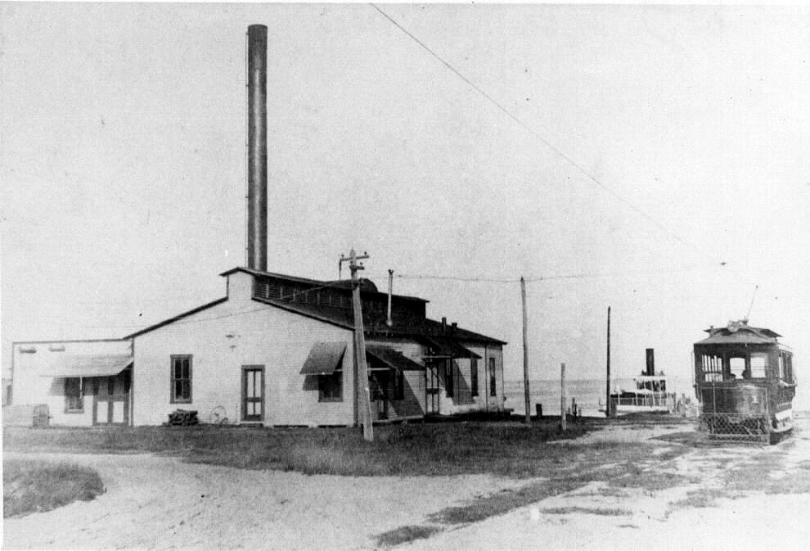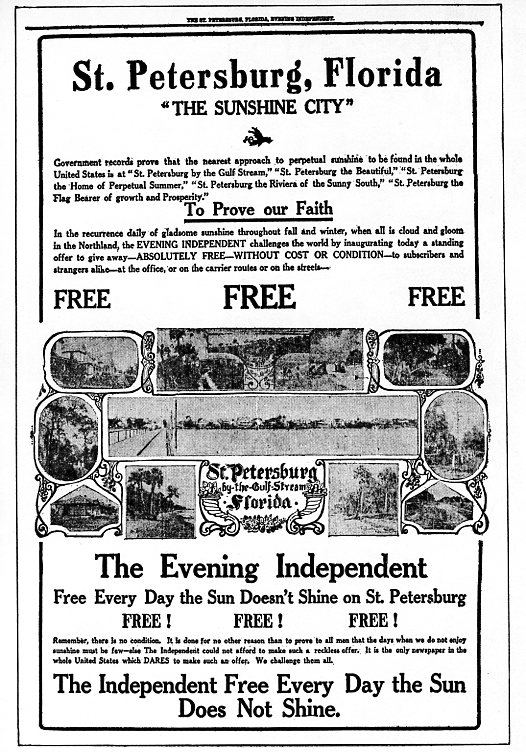F. A. Davis: Lighting The Way For St. Pete’s Growth

Shortly after reading the 1885 study from the American Medical Association about the healing wonders of the Pinellas Peninsula, Frank Allston Davis packed his bags for Florida. Suffering from rheumatism, the publisher and one of Philadelphia’s leading businessmen, spent his first warm winter in Tarpon Springs. Davis claimed he wanted to find a town with a better chance of growth and prosperity, so he moved to St. Petersburg.
After a brief partnership with Hamilton Disston resulted in the building of an electric plant in Tarpon Springs, Davis purchased waterfront land at the foot of Central Avenue. Davis was granted a municipal utilities franchise and within six months, St. Pete’s first power plant was ready for operation. With state politicians and other dignitaries in the audience, on August 5, 1897, his wood-burning plant brought 32 streetlights to life with a brilliant white light.
The St. Petersburg Electric Light & Power Company was not a financial success. Davis made frequent trips to Philadelphia to convince investors of his vision of a great city on the bay where growth and profits would follow.
Late in 1901, Davis again appeared before City Council, but with a plan for the St. Petersburg & Gulf Electric Railway – a streetcar line for St Pete. The question was asked why would the city give away any public land for an idea that was nonsense? In February of 1902 the residents and City Council agreed to allow Davis to proceed.
Davis had trouble raising the money locally, so he invited a few Philadelphia business associates to St. Pete to convince them on the future of the city. One of those friends was George S. Gandy.
The first trolley car moved down the line on September 28, 1905. As predicted, the trolley line began as a financial disaster. The car regularly ran empty. But this didn’t stop Davis as he continued to expand the lines and looked to the waters of Tampa Bay for his next venture.
In 1906, Davis demolished the Brantley pier and constructed the Electric Pier stretching 2,000 feet onto Tampa Bay. Trolley tracks for passenger and freight were laid on the new wide pier which was lit by electric lights. It was also home to Davis’s steamship “Favorite”, a 500-passenger ship that was going to help St. Petersburg become a popular Florida destination.
But the ship and Davis’s dream ran into a storm called Henry Plant. With Tampa’s growth his main focus, Plant purchased the Orange Belt Railway in 1906 and slowed St. Petersburg’s progress, preventing the city from competing with Tampa’s deep-water port. With St. Pete’s port nearly non-existent, Davis turned his attention back to the trolley lines. Partnering with H. Walter Fuller, he planned trolley line extensions. The line expanded to Bayboro and Big Bayou, through Coffee Pot to Perry Snell’s new north shore developments, and by 1913, Central Avenue to the Jungle Prada area.
After an argument with William Straub over the development of the downtown waterfront – Davis wanted a busy port city, Straub pushed for waterfront parks – Davis relinquished control of his company to Fuller and purchased nearly 13,000 acres of land northwest of St. Petersburg from Hamilton Disston.
The economic downturn created by World War I put a halt to development and Davis’s plans collapsed. Eventually becoming the City of Pinellas Park, the area remained sugar cane fields and orange groves.
Davis didn’t get to witness his dream of a prosperous St. Petersburg. The man who lit St. Pete died in Philadelphia of apparent heart failure in 1917.
While his power plant and trolley line never turned a profit, Davis was instrumental in promoting the Sunshine City. Historian Dr. Raymond Arsenault notes, “the irrepressible Davis acted as a one-man Chamber of Commerce.”
Access our St. Pete Stories first in ST. PETE IN A SNAP by signing up for our Newsletter!



